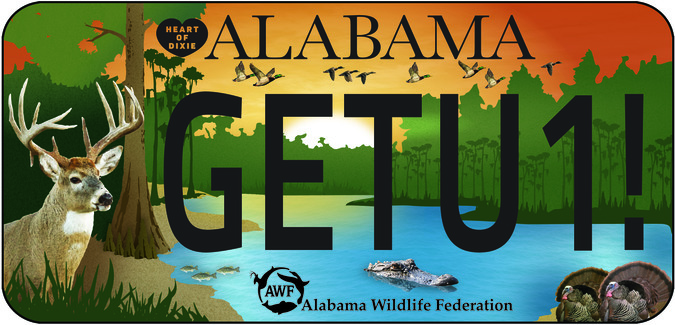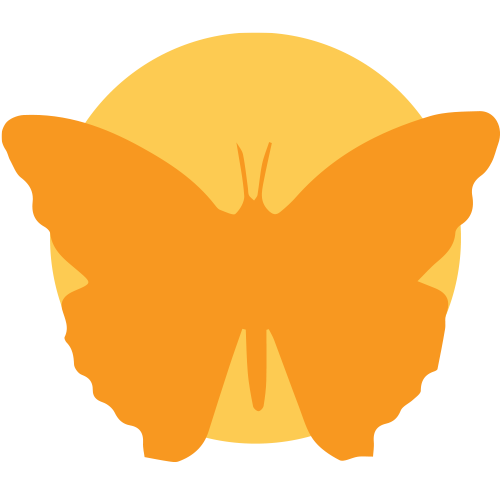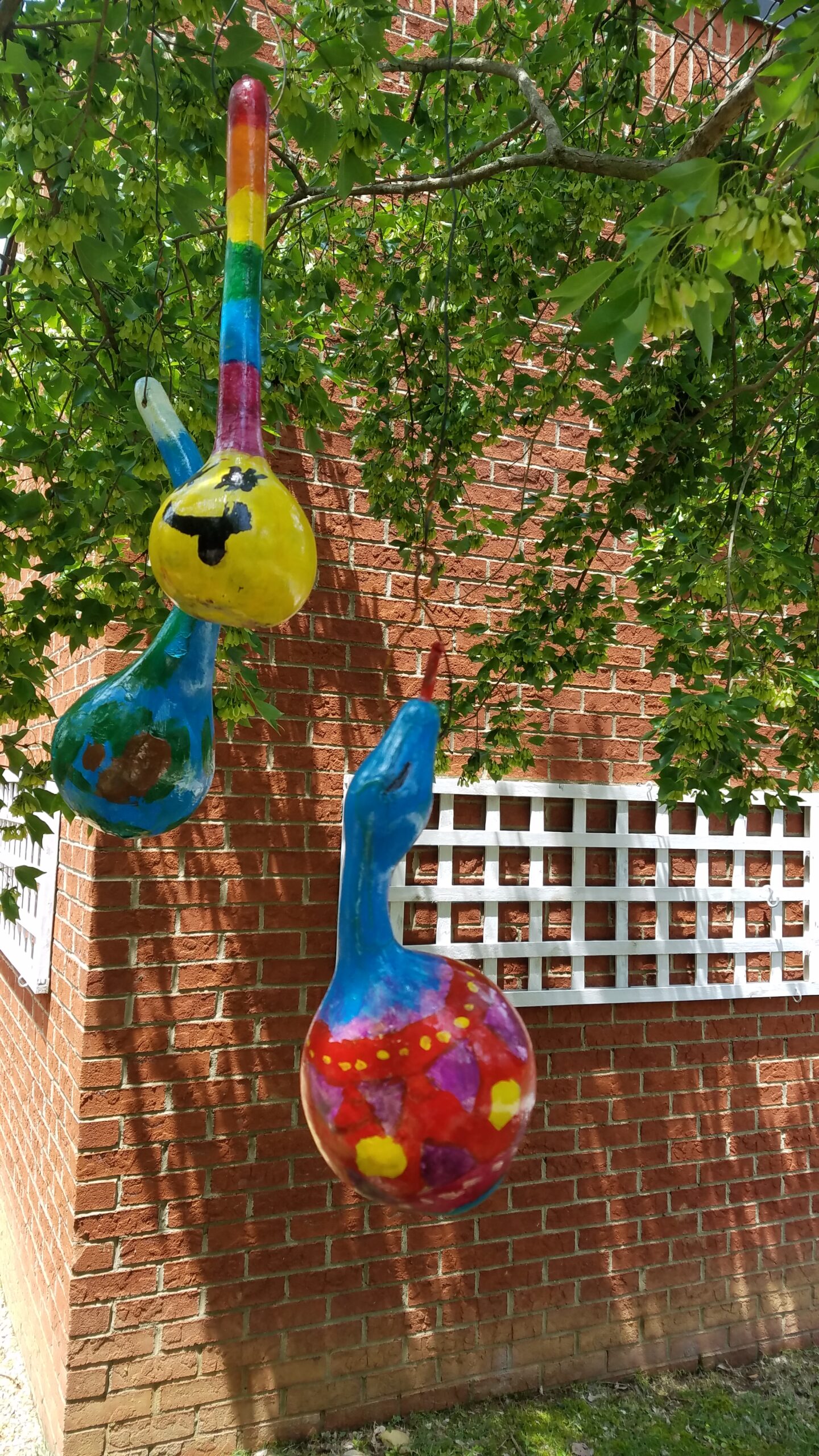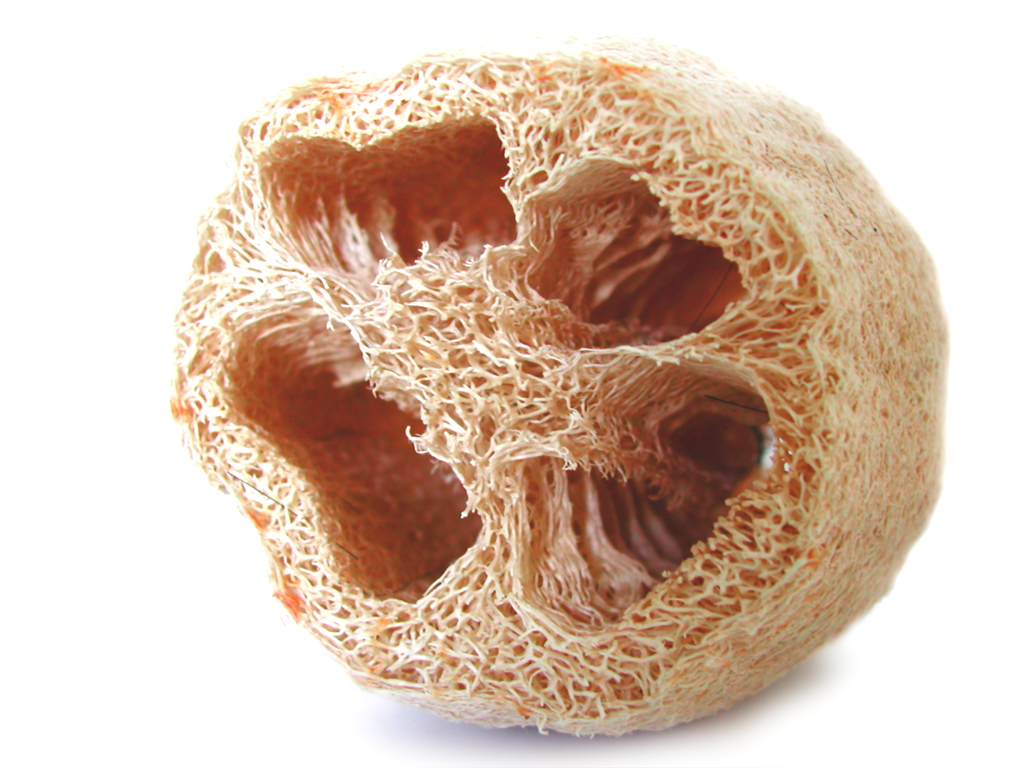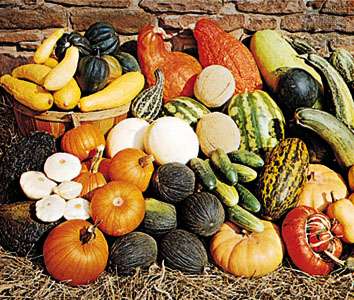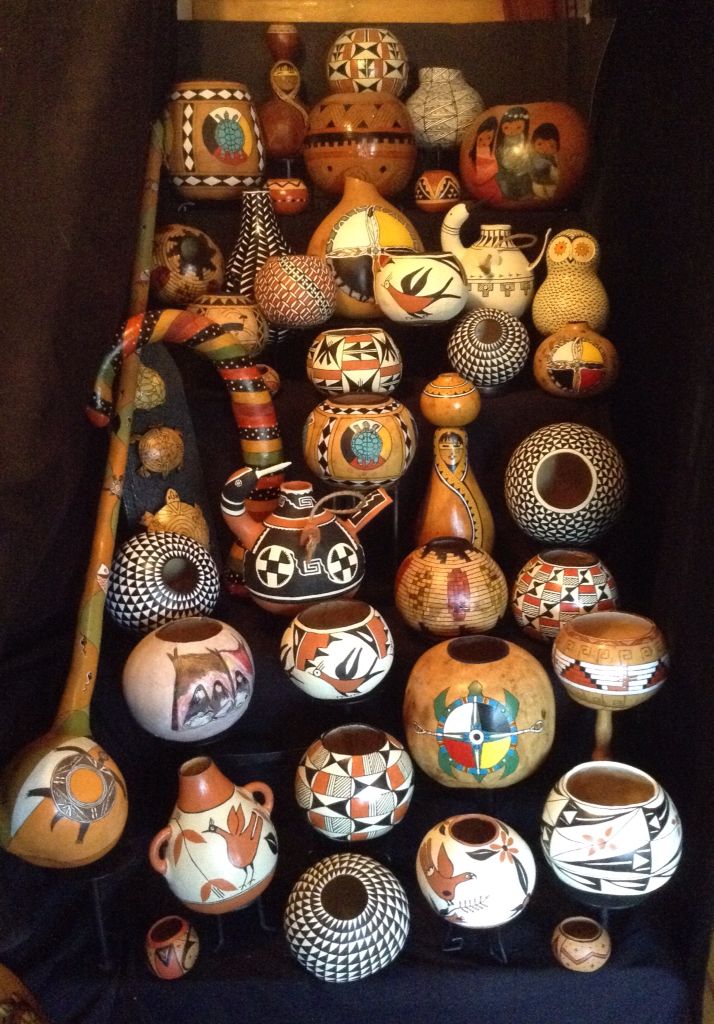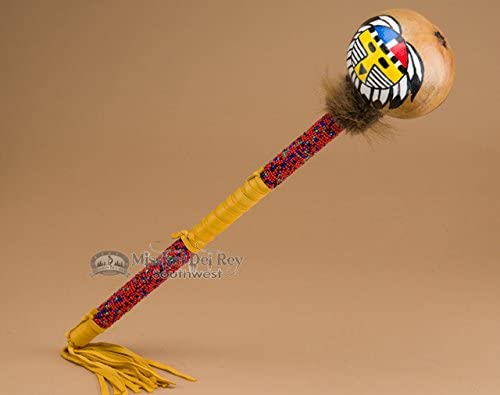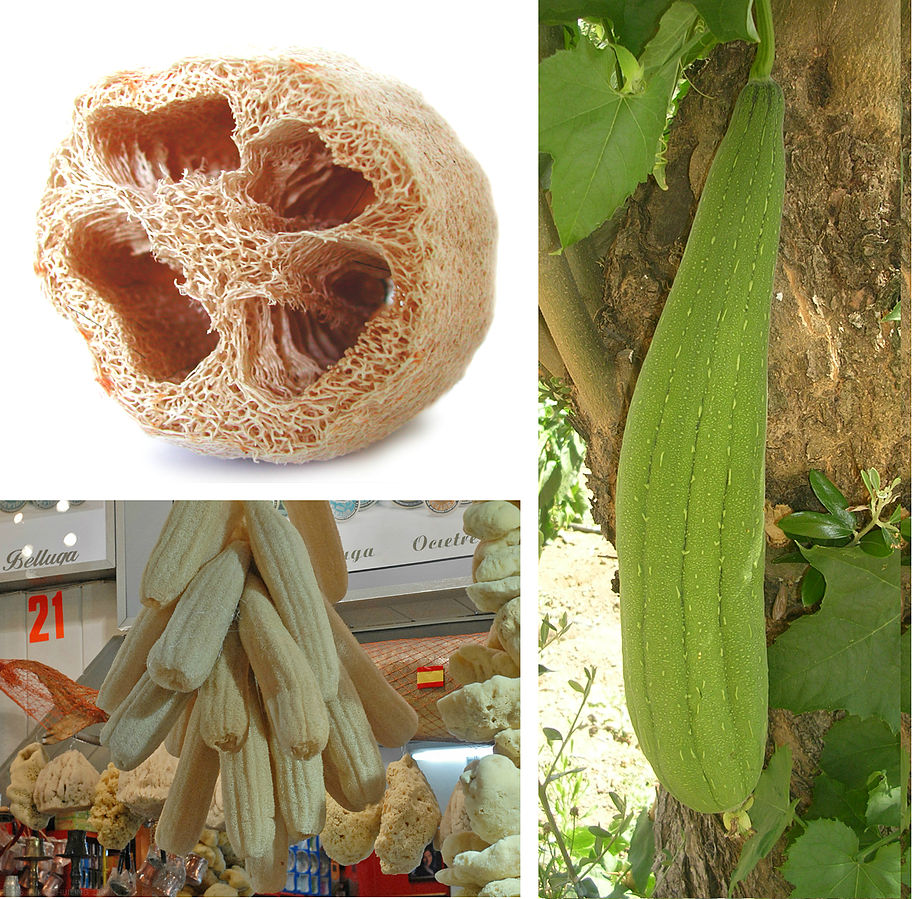| Uses for Gourds |
| |
|
Gourds have been used by many civilizations throughout thousands of years of history. Notably were the Native Americans that inhabitated the country before Europeans settled here.
- Between 1,000 and 1,500 A.D., Native Americans farmed, hunted, and fished.
- They lived in small towns or homesteads, maintained trade networks, had powerful leaders, and shared similar symbols rituals.
- Tribes of Alabama: Cherokee, Chocktaw, chickasaw, and Creek
- They were creative with their uses for things that they could grow or find in nature.
|
Choctaw-inspired Gourd Art
Cathy Nyman
Click on image to enlarge it
|
Early uses:
- In the beginning, gourds were used for many basic purposes like jewelry, utensils, dishes, and undecorated containers.
- People began using carving and burning techniques on the gourds.
- They were later decorated, hollowed out, dried, and filled with small materials and used as shaken instruments for songs and ceremonies.
|
Creek-inspired Rattle
Mission Dely Rey
Click on image to enlarge it
|
Bird Houses:
- A significant use of gourds for Native Americans was as bird houses to attract colonies of purple martins.
- Martins are insectivores (only eat insects) that catch their prey while flying.
- They eat dragonflies, wasps, moths, butterflies, flies, beetles, and other insects that are active during the day.
- Colonies of martins can make a large impact on insect populations, so they were a natural source of insect control in early days!
- To read more about this historical and current use of gourds to attract martins, CLICK HERE.
|
Purple Martins at Gourd House
James Audubon
Click on image to enlarge it
|
Storage:
- Gourds storing foods and other belongings were tied to trees to protect the items from animals or carried as canteens.
- They stored rubbing oils, body dyes, medicines, seeds, bait, and gunpowder.
- Gourds were used as cooking pots to boil food
- They would be filled with water before hot rocks were dropped in to heat the water.
- They could be made into ladles for pouring and spreading butter onto cooking stones.
|
Medicinal uses:
- Different parts of the plant from different species were used for different purposes to treat humans and sick horses.
|
- Sometimes the part of the plant was used on a similar part of the body.
- For example, the root may be used to treat the feet.
- The top of the gourd would be used to treat ailments in the head.
- Teas were made from different parts of the plant.
|
Luffa Gourd
Wikimedia
Click on image to enlarge it
|
Gourds today:
- Some gourds are still used today!
- The Luffa gourd is used to make non-food items such as scrubbing sponges, oil filters, life preservers, hats, and upholstery.
|
 Investigate Gourds
Investigate Gourds


